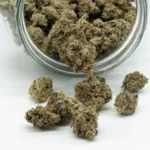Introduction to PCB Troubleshooting
Welcome to the world of PCB troubleshooting, where every problem presents an opportunity for learning and mastery. Whether you’re a seasoned engineer or just dipping your toes into the fascinating realm of printed circuit boards, understanding how to effectively troubleshoot is a skill that will set you apart.
In this comprehensive troubleshooting PCB problems guide, we’ll explore common PCB problems and their symptoms, equipping you with the knowledge to diagnose and resolve issues like a pro. But before we dive in, let’s take a moment to appreciate the artistry involved in troubleshooting. It’s like solving a puzzle, unraveling complex connections until clarity emerges. It’s an exhilarating dance between logic and intuition that can make even the most stubborn electronics come back to life.
So grab your magnifying glass (or maybe just your trusty multimeter), because it’s time to embark on our journey through the intricacies of PCB troubleshooting. Are you ready? Let’s get started!
Common PCB Problems and Symptoms
Common PCB Problems and Symptoms
When it comes to troubleshooting PCBs, being able to identify common problems and their symptoms is crucial. Here are some of the most frequently encountered issues that can occur with printed circuit boards:
1. Power Issues: One of the most common problems is a lack of power or erratic voltage levels. This can be caused by faulty components such as capacitors, resistors, or diodes.
2. Short Circuits: A short circuit occurs when there is an unintended connection between two points on the board. This often results in overheating and can cause damage to both the PCB and connected devices.
3. Signal Interference: If you notice distorted signals or poor quality audio/video output, signal interference may be to blame. This can occur due to improper grounding or electromagnetic interference from nearby sources.
4. Component Failures: Over time, components on a PCB can fail due to factors such as aging, heat stress, or manufacturing defects. Common signs include burnt marks, bulging capacitors, or blown fuses.
5. Soldering Issues: Poor soldering connections can lead to intermittent connectivity problems or complete failures within a circuit board assembly.
6. Environmental Factors: Excessive humidity levels, extreme temperatures, dust accumulation, or exposure to corrosive substances can all contribute to PCB malfunctions.
By familiarizing yourself with these common problems and their symptoms in advance you will be better equipped for successful troubleshooting sessions
Tools and Equipment Needed for Troubleshooting
Mastering the art of troubleshooting PCB problems requires a combination of knowledge, experience, and the right tools and equipment. In this comprehensive guide, we have explored common PCB problems and symptoms that you may encounter, as well as provided insights into how to effectively troubleshoot them.
Throughout this article, we have emphasized the importance of understanding circuit theory fundamentals, inspecting for physical damage or faults, utilizing diagnostic tools such as multimeters and oscilloscopes, and employing systematic approaches like divide-and-conquer or signal tracing techniques.
However, it’s worth mentioning that troubleshooting is not an exact science. It often involves a fair amount of trial and error along with patience and persistence. Each problem you encounter will present unique challenges that require creative thinking and problem-solving skills.
Remember to document your findings throughout the troubleshooting process. Take notes on any changes made or observations noted so that you can refer back to them later if needed. This will help streamline future troubleshooting efforts while also serving as valuable documentation for colleagues or clients.
Mastering the art of troubleshooting PCB problems is a continuous learning journey. As technology continues to advance rapidly in today’s world, new challenges will arise regularly. By staying curious, keeping up with industry trends and developments through research or training programs – both online resources are excellent options – you can sharpen your skills further.
So don’t be discouraged by setbacks or complex issues; instead view them as opportunities for growth and development in your PCB troubleshooting abilities.
Happy Troubleshooting!
